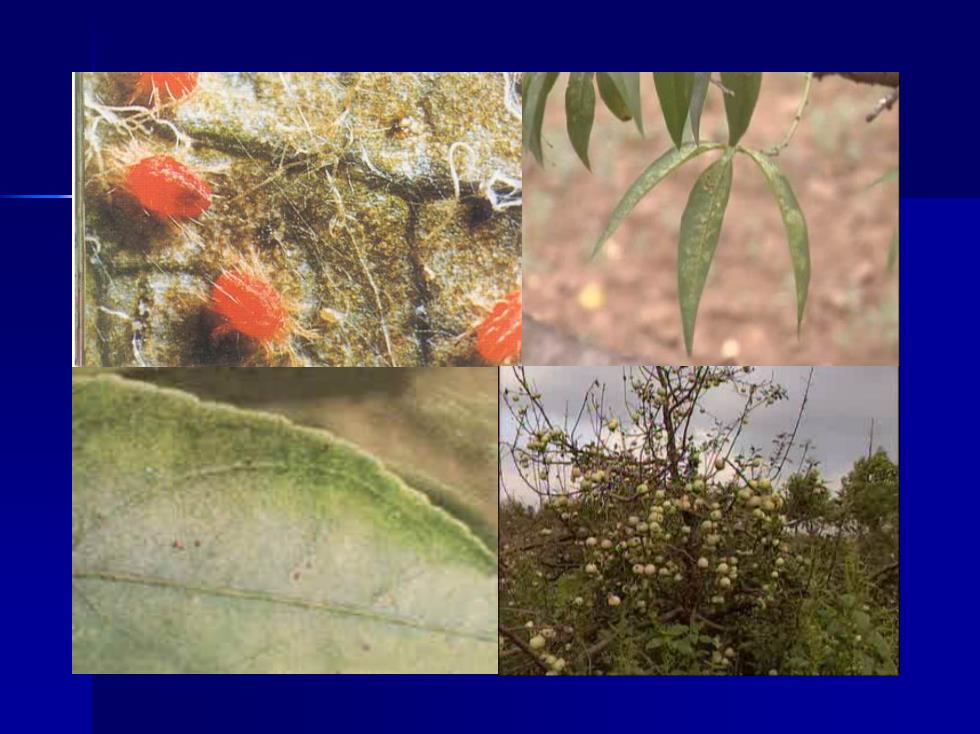
Chapter 9 M亚CE Wu Junxiang Li Yiping Junxw@nwsuaf.edu.cn yp2003@126.com
Wu Junxiang Junxiang Li Yiping Junxw@nwsuaf.edu.cn lyp2003@126.com lyp2003@126.com Chapter Chapter 9 MITES

Chapter 9 MITES Mites acarids acarus; ◆Arthropoda,Arachnida(蛛形纲); Most of mite pests are in Tetranychidae, Tenuipalpidae(细须螨科),Diptilomiopidae (瘿螨科),Tarsonemidae(跗线螨科)and Acaridae(粉螨科)in Acariformes(真螨目)
Mites = acarids = acarus; Arthropoda, Arachnida (蛛形纲); Most of mite pests are in Tetranychidae, Tenuipalpidae (细须螨科), Diptilomiopidae (瘿螨科), Tarsonemidae (跗线螨科) and Acaridae (粉螨科) in Acariformes (真螨目). Chapter Chapter 9 MITES 9 MITES

Chapter 9 MITES Lecture Outline General biology of mites Bionomics of mites Cereal crop mites Cotton mites Vegetable crop mites ■Fruit tree mites Monitoring and Management
Lecture Outline Lecture Outline General biology of mites General biology of mites Bionomics of mites Bionomics of mites Cereal crop mites Cereal crop mites Cotton mites Cotton mites Vegetable crop mites Vegetable crop mites Fruit tree mites Fruit tree mites Monitoring and Management Monitoring and Management Chapter Chapter 9 MITES 9 MITES
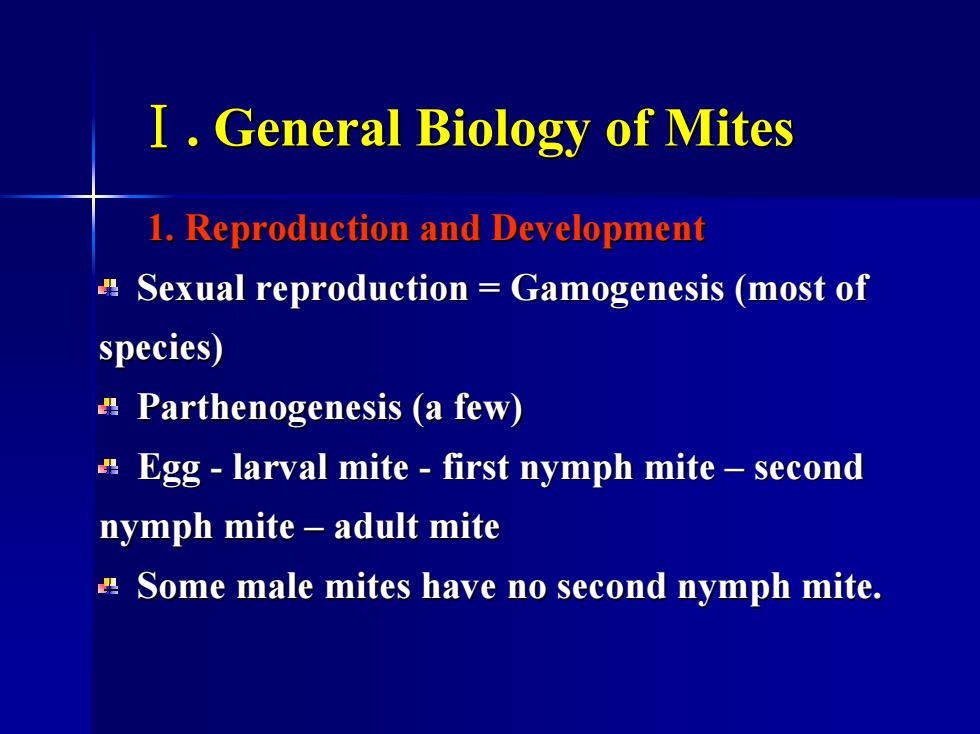
I General Biology of Mites 1.Reproduction and Development 串 Sexual reproduction Gamogenesis (most of species) Parthenogenesis (a few) Egg larval mite first nymph mite second nymph mite adult mite 是 Some male mites have no second nymph mite
Ⅰ. General Biology of Mites . General Biology of Mites 1. Reproduction and Development 1. Reproduction and Development Sexual reproduction = Gamogenesis (most of Sexual reproduction = Gamogenesis (most of species) species) Parthenogenesis (a few) Parthenogenesis (a few) Egg - larval mite larval mite - first nymph mite first nymph mite – second nymph mite nymph mite – adult mite adult mite Some male mites have no second nymph mite. Some male mites have no second nymph mite
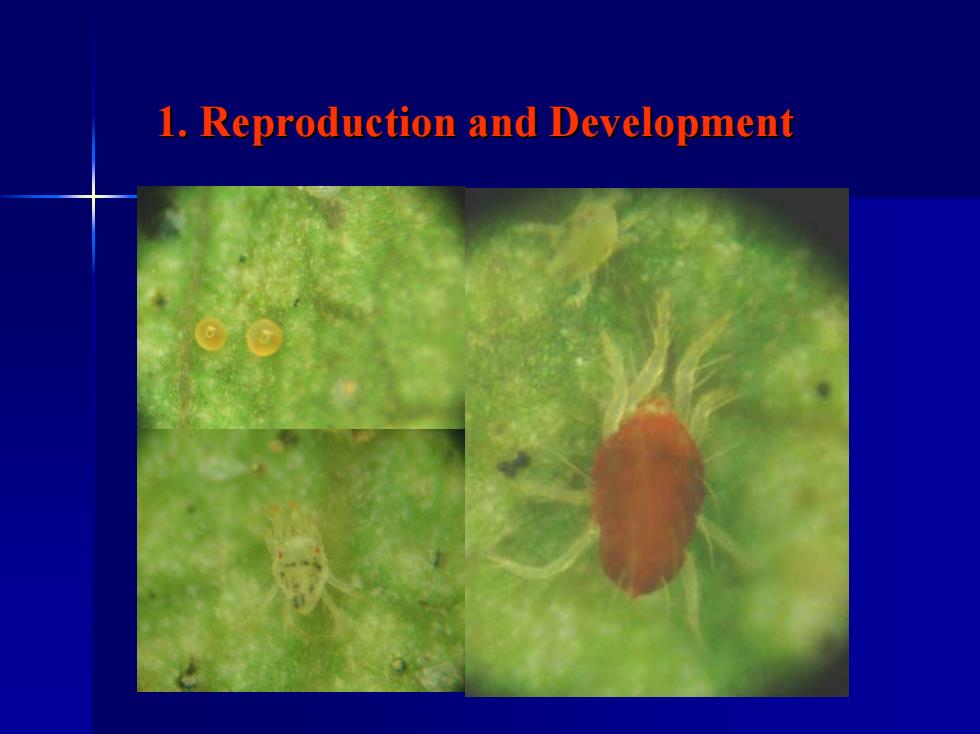
1.Reproduction and Development
1. Reproduction and Development 1. Reproduction and Development
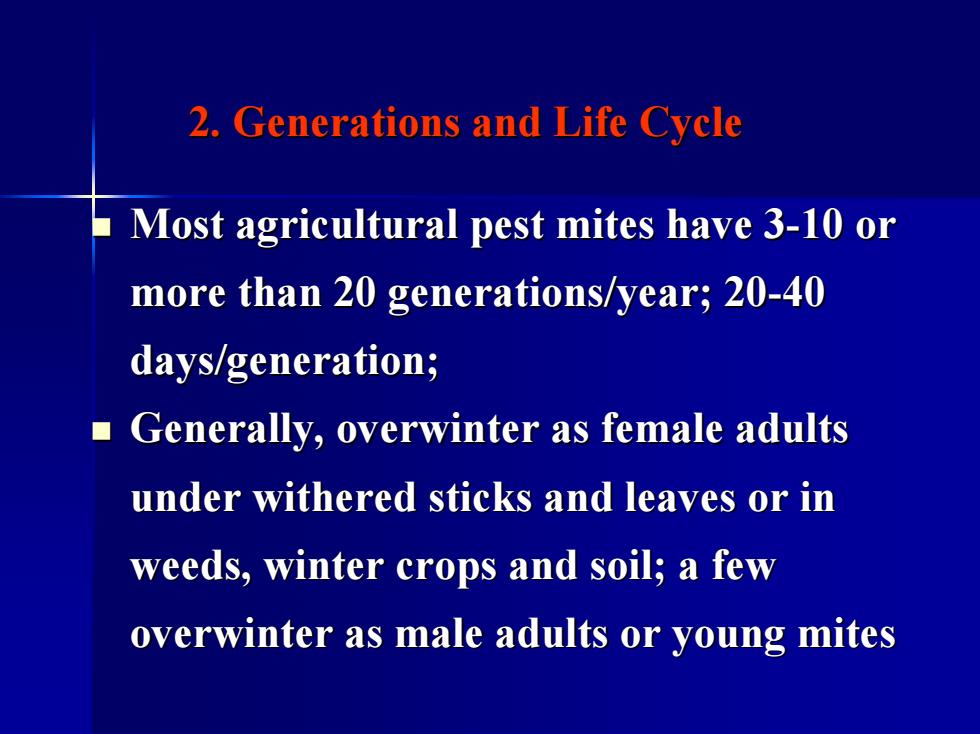
2.Generations and Life Cycle Most agricultural pest mites have 3-10 or more than 20 generations/year;20-40 days/generation; Generally,overwinter as female adults under withered sticks and leaves or in weeds,winter crops and soil;a few overwinter as male adults or young mites
Most agricultural pest mites have 3 Most agricultural pest mites have 3-10 or more than 20 generations/year; 20 more than 20 generations/year; 20-40 days/generation; days/generation; Generally, Generally, overwinter overwinter as female adults as female adults under withered sticks and leaves or in under withered sticks and leaves or in weeds, winter crops and soil; a few weeds, winter crops and soil; a few overwinter overwinter as male adults or young mites as male adults or young mites 2. Generations and Life Cycle 2. Generations and Life Cycle
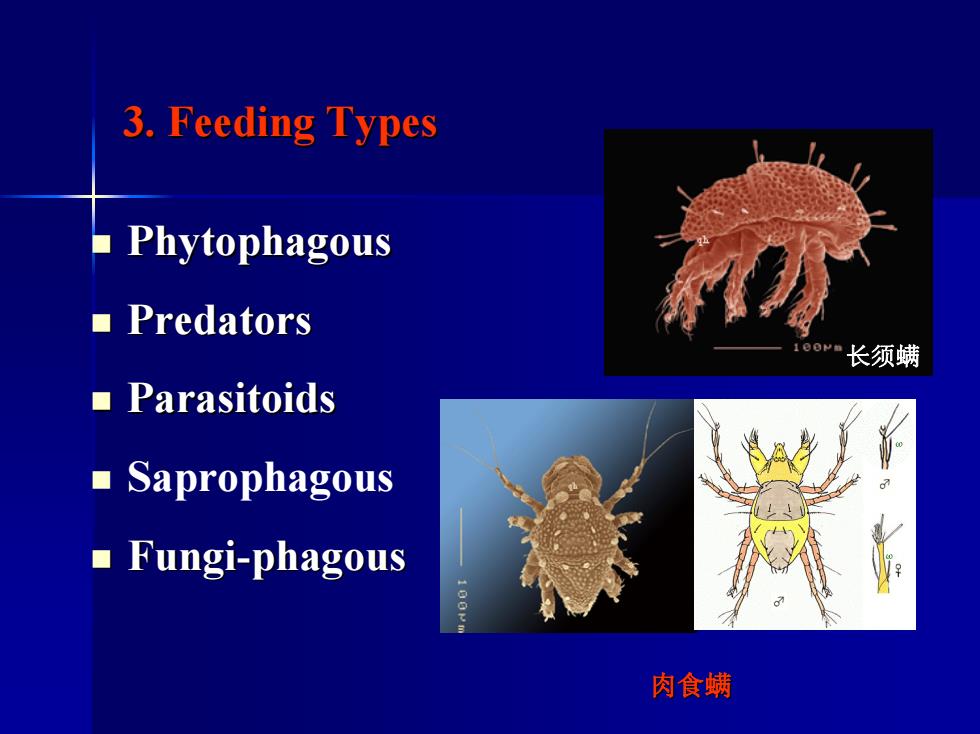
3.Feeding Types Phytophagous ■Predators 长须螨 ■Parasitoids Saprophagous ■Fungi-phagous 肉食螨
Phytophagous Phytophagous Predators Predators Parasitoids Parasitoids Saprophagous Fungi-phagous phagous 3. Feeding Types 3. Feeding Types 肉食螨 长须螨
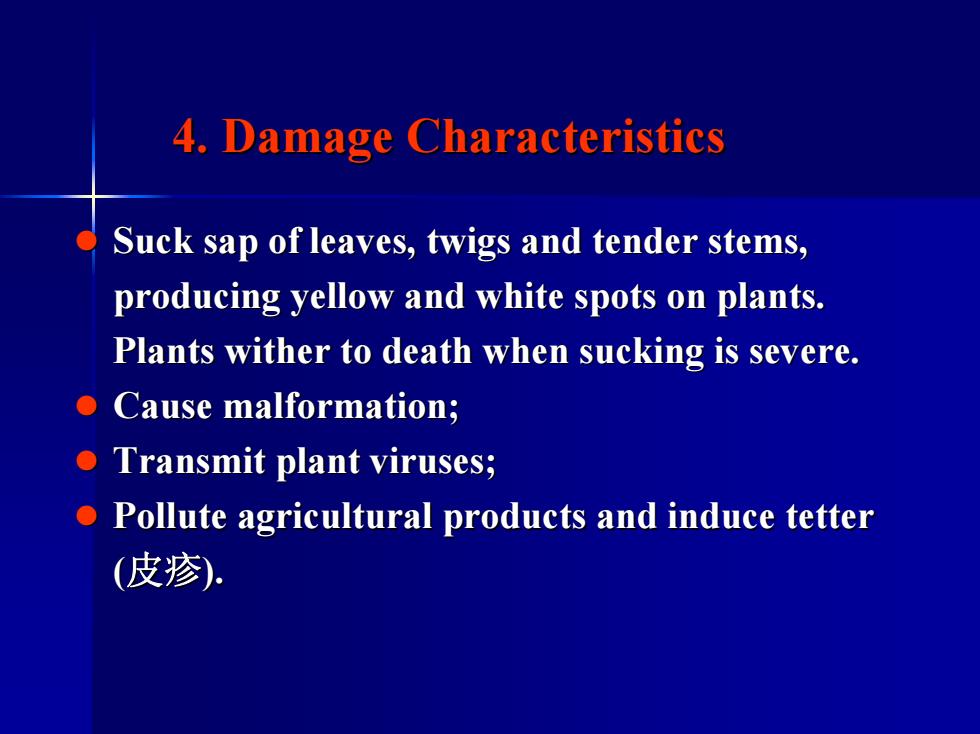
4.Damage Characteristics Suck sap of leaves,twigs and tender stems, producing yellow and white spots on plants. Plants wither to death when sucking is severe. ●Cause malformation; o Transmit plant viruses; Pollute agricultural products and induce tetter (皮疹)
z Suck sap of leaves, twigs and tender stems, Suck sap of leaves, twigs and tender stems, producing yellow and white spots on plants. producing yellow and white spots on plants. Plants wither to death when sucking is severe. Plants wither to death when sucking is severe. z Cause malformation; Cause malformation; z Transmit plant viruses; Transmit plant viruses; z Pollute agricultural products and induce Pollute agricultural products and induce tetter (皮疹). 4. Damage Characteristics 4. Damage Characteristics

咖啡小爪螨成虫 卵 为害状 茶谢线螨成虫
